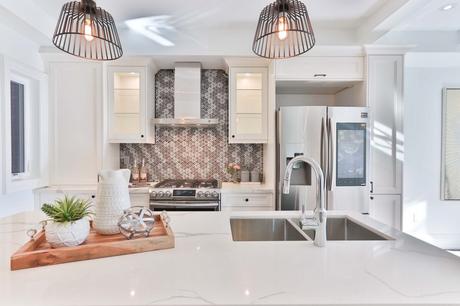
Besides providing hot and cold water, kitchen faucets play an important role in kitchen design. Design and style may fascinate you, but don’t ignore the practical factors. Looks matter, but you don’t have to give up comfort or long-term reliability to get it. Buying a kitchen faucet may seem daunting. The variety of styles, materials, and finishes and the price range can be confusing. You will most likely use your new faucet for a long time, so make sure you enjoy it while you can.
We’ve consulted with faucet designers, manufacturers, retailers, and plumbers. Here are 5 things to think about before you buy a new kitchen faucet.
1. Check the Material
If you don’t want a dripping faucet, look for one with ceramic valves instead. Although other types of kitchen faucets are usually drip-free for years, they can’t compete with the long-term reliability of ceramic valves. A tap with ceramic valves costs about the same as a tap with a standard valve.
2. Check the Finishes
Opt for a finish that coordinates with the nearby cabinet hardware. If you replace existing hardware, the possibilities are endless. Most fittings are made of polished chrome, nickel, or bronze. All of these surfaces are durable and attractive, but some outlast others.
Chrome is the most durable and easy to clean surface and is ideal for commercial kitchens and public toilets. If your faucet is much used, this is your best option.
Nickel surfaces that are brushed, stained, or stainless steel with a matte gloss are hard to clean due to fingerprints and water stains. Some are coated to reduce stains, but the coating may chip off or wear out over time.
Boiled or grated bronze taps have a brownish tone. But the surface is an epoxy coating, not metal. This coating is tough but easier to scratch than metal.
3. Decide between the single and double handle.
Two-handle faucets add symmetry to traditional bathrooms. But single-handle faucets have all the benefits of easy maneuvering when you only have one hand available. You can adjust the water temperature more easily, and there’s one less handle to clean.
4. Decide Between Side Prayer and Pull-Down Sprayer
A side sprayer is much like an integrated spray head but is a separate entity mounted next to the main faucet. It is equipped with a long hose that can be pulled out and maneuvered to spray wherever you want it to spray in your sink. However, a side sprayer is likely to dribble or leak. Experts suggest that a ‘pull-down’ sprayer outperformed the side sprayer.
5. Water Filtration Included
In modern kitchen faucets, you get filtered water directly from the tap. Filtration can help keep your tap water clean. Look for the best filter system in a kitchen tap.
How do I know what size faucet I need?
First, you will want to know how many holes are pre-cut in your sink. If you have separate handles for the hot and cold water, you have three holes in the sink to accommodate them. If you are not sure how many holes you can always look under the sink or take the distance between the handles and multiply it by two. Allowing for one or two centimeters distance between where the taps go will prevent anything from getting caught up. If the distance between the tap and sink is six inches or more, you will need an eight-inch wide kitchen faucet.
Do all kitchen faucets fit all sinks?
There are many types of kitchen faucets and sinks to choose from, but they are not always compatible. The number of mounting holes on a kitchen faucet can range from one to four. The spout and two handles are each accessible through three holes. Four holes are typically used for accessories such as soap dispensers or side sprays. Additionally the depth and size of your kitchen sink can determine the length of your spray hose needed.
Takeaway
There are numerous factors that can impact your decision before purchasing a new kitchen faucet. From aesthetics to practicality using these filters to analyze the brands essential to you can make the process all the more free flowing.
